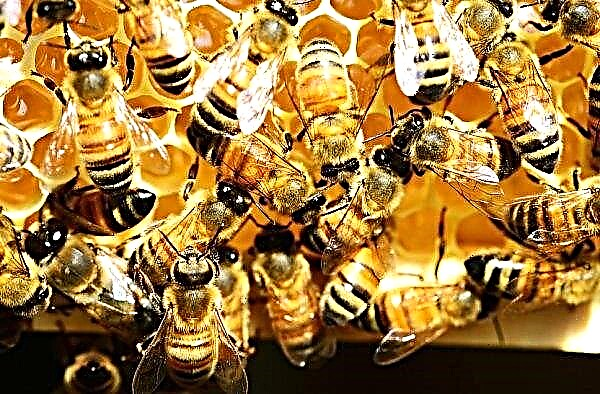Allergy is an annoying disease that can cause a person a lot of trouble. In order to avoid bad consequences, you need to know whether the owner of the rabbits can have a similar condition, how it manifests itself, as well as its causes and treatment methods. This is especially important for those who are in direct contact with these animals.
How is allergy to a rabbit
An allergy can occur as a reaction of the body to the hair and excretion of a decorative rabbit, as well as to animal meat. This disease occurs in both children and adults.
Symptoms of an allergic reaction to rabbits include the following:
- rash;
- nasal congestion and discharge;
- cough;
- inflammation of the eyes, profuse lacrimation;
- conjunctivitis;
- soreness in the abdomen;
- nausea and vomiting;
- difficulty breathing
- anaphylactic shock (rarely).

In children
An allergic reaction in children manifests itself as a reaction of an unadapted organism to an irritant. Most often, the disease either has the same symptoms as in adults, or manifests itself more intensely. Children under 1 year old are at greatest risk of developing the disease.
The reason is the fact that the baby has not yet formed immunity.
Did you know? According to a study by Danish scientists, the risk of developing an allergy to pets is reduced in children who come into contact with them in their first year of life.
In adults
Pathology can occur and manifest during the life of an adult. First of all, this is due to a decrease in immunity and an additional deterioration in health during the development of other diseases.
Pregnants are especially prone to allergies. If a woman in position reveals an unusual reaction of the body to a rabbit or its meat, you need to pay close attention to possible similar symptoms in a child.
Reasons for the appearance
Among the main causes of the development of the disease are the following:
- decreased immunity;
- bronchial asthma and allergies to coat as a result;
- excessive presence of rabbit in the diet;
- poor care for the rabbit and prolonged exposure to particles of its life.
 There is a difference between an allergic reaction to a decorative rabbit and an ordinary one. In all cases, the main allergen is protein, which can be secreted through the skin and excrement, and is also found in meat. Separately, a reaction to wool is isolated, the inhalation of which provokes unpleasant symptoms.
There is a difference between an allergic reaction to a decorative rabbit and an ordinary one. In all cases, the main allergen is protein, which can be secreted through the skin and excrement, and is also found in meat. Separately, a reaction to wool is isolated, the inhalation of which provokes unpleasant symptoms.If we are talking about allergies to protein, then it is not enough to exclude meat from the diet, it is important to limit communication with all eared. If there is a reaction only to the coat of ornamental rabbits, we can only exclude contact with individuals of long-haired breeds.
Important! The reaction to both major allergens (cross-allergy) is an urgent reason to contact a health facility.
First aid for allergies
In a critical situation, an appeal to the doctor is required, and before his arrival it is necessary to perform some actions in relation to the injured person. First aid is to alleviate the condition of the patient and fix the time of onset of symptoms.
The following actions must be performed:
- Eliminate the source, for example, leave the room where the rabbit is located, or induce vomiting, if after eating rabbits no more than half an hour has passed.
- Record the exact time or approximate time range when the first signs of malaise were found.
- Perform symptomatic therapy depending on the reaction that appears. For example, instill a vasoconstrictor drug in the stuffy nose or treat the site of the rash with a topical medicine.
- Take an antihistamine.
- If the weakness does not recede, lay the patient on his back and raise his legs above head level.

Treatment
There are 2 main methods of combating this disease: conservative drug treatment and folk remedies.
Important! When choking, it is better not to offer water.
Medication
Since allergies are not completely treatable, symptomatic therapy is generally used. The pharmacological drugs used to treat this disease include medicines in the form of tablets, creams and eye drops. Syrups may be prescribed for children.
Tablets
For therapy, hormonal or antihistamine tablets are prescribed. They block the production of histamine, which helps to reduce the manifestation of the disease.
Among them are the following:
- Loratadine. For allergies, taking 1 tablet 1 time per day is indicated.
- Erius. Patients over 12 years old should take 1 tablet per day.
- Suprastin. The dosage for adults is 1 tablet 3-4 times a day with meals.
- Treksil. 1 tablet per day for patients over 18 years of age. From 12 to 17 years old - use with caution.
- Cetirizine. The systemic reception is shown once a day.

Creams
Creams and ointments are used in cases of rash due to contact with the animal.
The following is a list of a number of drugs:
- Akriderm GK. The drug is applied to the affected areas 2 times a day, the duration is determined by the attending physician.
- Sinaflan. Ointment is used for a period of 5 to 10 days, the maximum period of use is 14 days. The drug should be rubbed at the site of the rash 2 times a day.
- Mesoderm. This cream is applied in a thin layer and rubbed into the skin from 1 to 3 times a day. The duration of therapy is determined by the doctor, mainly from 1 to 3 weeks.
- Elidel. The drug is applied to the affected area 2 times a day, the duration of treatment is prescribed by a specialist.
Eye drops
To eliminate conjunctivitis, redness of the eyes and profuse lacrimation, patients are advised to resort to the use of eye drops. Their symptomatic effect allows you to get rid of discomfort.
Your doctor may prescribe one of the following types of drops:
- Lecrolin. It is possible to use for adults and children from 4 years of age, 1-2 drops in each eye 2 times a day.
- Cromohexal. Eye drops are prescribed for instillation 4 times a day, 1 drop.
- Opatanol. 2 times a day, it is necessary to drip in each eye 1 drop.

Nasal drops
With nasal congestion, nasal sprays are used that help get rid of allergic rhinitis:
- Nazarel. It is indicated for patients over 12 years old. Do 2 injections into each nostril 2 times a day.
- Nazonex. For allergic rhinitis, it is necessary to use 2 doses in each nostril 2 times a day. Patients must be at least 12 years old.
Syrups for children
For easy intake, children are prescribed syrups instead of tablets:
- Erius. The drug is prescribed for children older than six months. It should be taken 1 time per day: for children from 0.5 to 1 year - 2 ml, from 1 to 5 years - 2.5 ml, from 5 to 11 years - 5 ml.
- Eden. Like the previous medicine, it contains desloratadine, therefore, the optimal dosage is taken once a day: for children from 0.5 to 1 year - 2 ml, from 1 to 5 years - 2.5 ml, from 5 to 11 years - 5 ml each.
- Zodak. Take 2 times a day: from 2 to 6 years - 2.5 ml, from 6 to 12 years - 5 ml.
Important! All drugs should preferably be taken only as prescribed by the doctor and with caution. Pregnant, nursing mothers and children need to be especially careful.
Folk methods
In the people for the treatment of allergies, as a rule, decoctions and ointments are used. Such therapy is often used as an adjunct to the main method of treatment with medications.
Decoctions
Decoctions for the treatment of the disease are prepared using medicinal herbs. There are several recipes that help relieve the condition.
Bay laurel
Ingredients:
- bay leaf - 5 pcs.;
- water - 1 l.
Cooking method:
- boil water;
- add bay leaf;
- boil for 10 minutes;
- remove from heat and insist for 2 hours.
For a better result, you need to use the drug 3 times a day.
A decoction of the string
Ingredients:
- dried string - 1 tbsp. l .;
- water - 1 l.
 Cooking method:
Cooking method:- boil water;
- enter a series;
- cook 10-15 minutes;
- cool.
Ready broth should be taken 2-3 times a day.
Did you know? In medical terminology, the allergen that is distributed by rabbits is called F213.
Ointments
For local treatment, you can use your own ointments. You can use such drugs both for children and adults.
Chamomile
Ingredients:
- dried pharmacy chamomile - 1 tbsp. l .;
- coconut oil - 3 tbsp. l .;
- aloe vera gel - 1 tsp;
- lavender oil - 2 drops.
Cooking method:
- melt coconut oil over low heat;
- fill in the dried chamomile and, without increasing the heat, cook for 1 hour;
- cool the mixture;
- add lavender oil and aloe vera;
- mix thoroughly.
 Apply by gently rubbing the ointment into the affected areas of the skin.
Apply by gently rubbing the ointment into the affected areas of the skin.Sea buckthorn
Ingredients:
- sea buckthorn oil - 1 tbsp. l .;
- baby cream - 1/4 cup.
Cooking method:
- mix both ingredients;
- cool
Apply the resulting ointment to places where there is a rash.
Preventive measures
In order to prevent the development of allergies to rabbits, it is necessary to resort to preventive measures, among which the following can be distinguished:
- restriction of contact with animals;
- refusal to use rabbit meat;
- thorough cleaning of the animal if contact cannot be avoided;
- keeping the rabbit in a separate room in a closed cage or aviary;
- stimulation of the proper functioning of the immune system in the form of maintaining a healthy lifestyle.
 An allergic reaction to rabbits or rabbit is an occasion to consult a doctor and conduct therapeutic measures. With all the recommendations for combating the disease, you can pretty quickly achieve a significant improvement in well-being.
An allergic reaction to rabbits or rabbit is an occasion to consult a doctor and conduct therapeutic measures. With all the recommendations for combating the disease, you can pretty quickly achieve a significant improvement in well-being.












